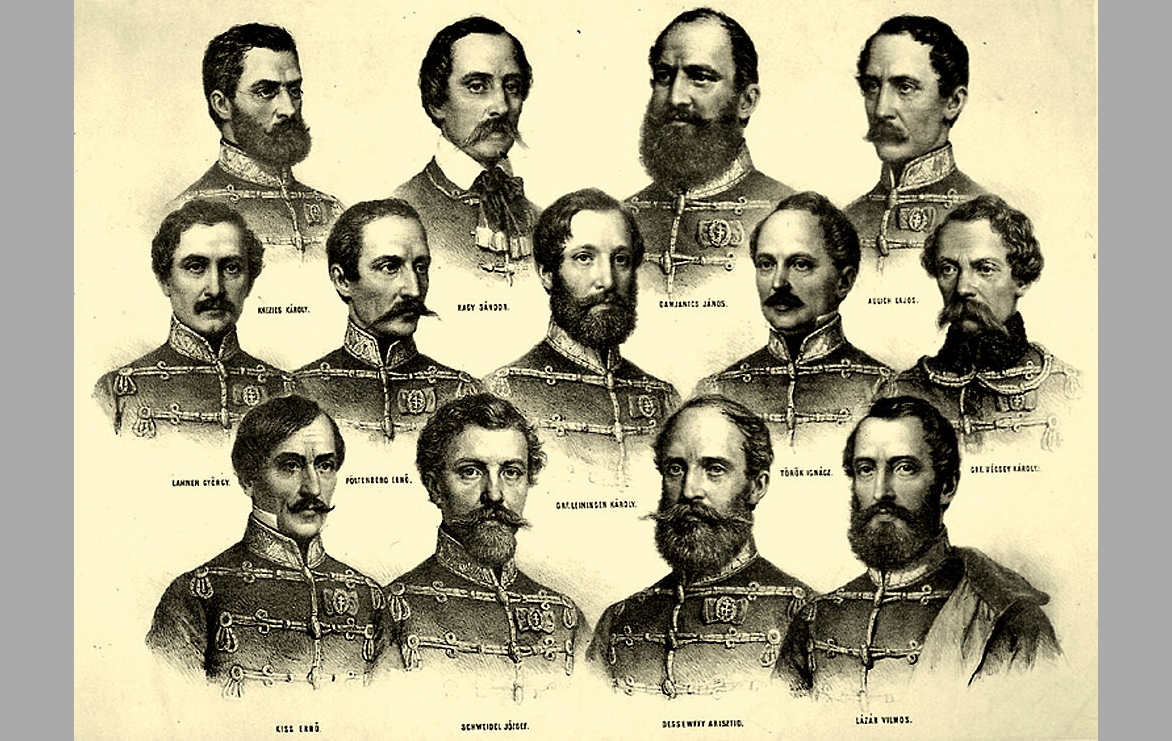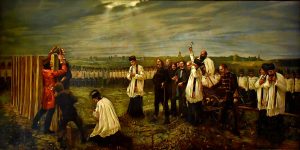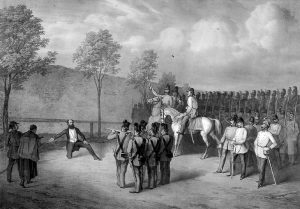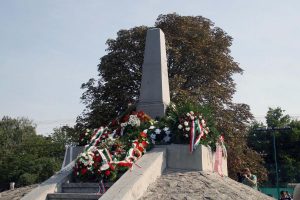
The exhibition is on display at the National Museum and Institute of Theater History, the Bajor Gizi Museum of Acting.Continue reading

174 years ago, on October 6, 1849, thirteen officers of the 1848-49 War of Independence were executed in Arad, in today’s Romania. In 2001, the government declared October 6 a national day of mourning.
The execution of the 13 generals was ordered by Austrian General Julius Jacob von Haynau after the failure of the Hungarian Revolution and the War of Independence of 1848-1849. The generals, who were active or retired imperial officers at the beginning of the War of Independence, were captured and executed by the Austrian army to make an example of them and ensure that Hungary would never again rebel against the Habsburg Empire.

Painting by Hungarian painter János Thorma entitled “Martyrs of Arad”. Photo: Wikipedia
The Martyrs of Arad were executed at dawn on October 6, 1849, the first anniversary of the Vienna October Uprising and the assassination of Imperial War Minister Theodor Baillet of Latour. Although the number of officers executed in Arad was sixteen, the national memory remembers mainly the thirteen officers executed on that day:
Aristid Dessewffy, Ernő Kiss, József Schweidel, Ernő Pöltenberg, Ignác Török, György Láhner, Károly Knézićh, József Nagysándor, Károly Leiningen-Westerburg, Lajos Aulich, János Damjanich, Károly Vécsey and Colonel Vilmos Lázár, and the death of Prime Minister Lajos Batthyány became the symbol of the defeat of the Revolution and the War of Independence. Lajos Batthyány, who was also sentenced to death, could not be hanged because of his wounds after a failed suicide attempt. His death sentence was carried out by shooting. The Hungarian prime minister, weakened from heavy blood loss, was accompanied by two men. In front of the firing squad he knelt down on one knee and shouted “Long live the Fatherland! Forward, hunters!”

The execution of Lajos Batthyány. Photo: Wikipedia
Many other high-ranking officers met a similar fate to the martyrs of Arad, hundreds more officers were sentenced to death, but most sentences were commuted to 20 years imprisonment as clemency.
The struggle for freedom was not in vain, however: pre-revolutionary conditions could not be restored, and despite the downfall, the idea of freedom and independence not only lived on in the nation, but grew stronger. The country embarked on the path of civil progress, albeit at the cost of enormous blood sacrifice and deprivation of national self-determination.

Memorial column at the site of the executions in Arad. Photo: Facebook/Őseink és unokáik.
Until 1867, the commemoration of the Arad Martyrs could only take place in secret, but after the Austro-Hungarian Compromise, October 6 became a national day of mourning. After the First World War, the importance of the memorial day increased. In the communist period it was not banned, but it was not a public holiday either. In schools and newspapers the fallen were commemorated, while the focus of commemoration shifted to the Austrian terror and sympathy for the intervening Russian-Cossack troops.

The memorial statues of the martyrs of Arad in the courtyard of the Museum of Military History. Photo: Facebook/Pest Vármegyei Kormányhivatal
Traditionally, the Hungarian national flag is flown at half-mast in Kossuth Square. Candles are then lit at the Batthyány Monument, the site of the former prime minister’s defeat, and a wreath is laid at the Batthyány Mausoleum at the National War of Independence Memorial in Fiumei út in Budapest. A mourning banner is placed on public buildings and commemorative events are held in schools.
In front of the Parliament on Lajos Kossuth Square, the national flag was hoisted today in memory of the martyrs of Arad and was set at half-mast during a military salute.
In honor of the heroes!
writes the State Secretary for International Communications and Relations, Zoltán Kovács, in his Facebook post.
President Katalin Novák also commemorates the freedom fighters with the words:
Tribute to the martyrs of Hungarian freedom!
Featured Image: Wikipedia